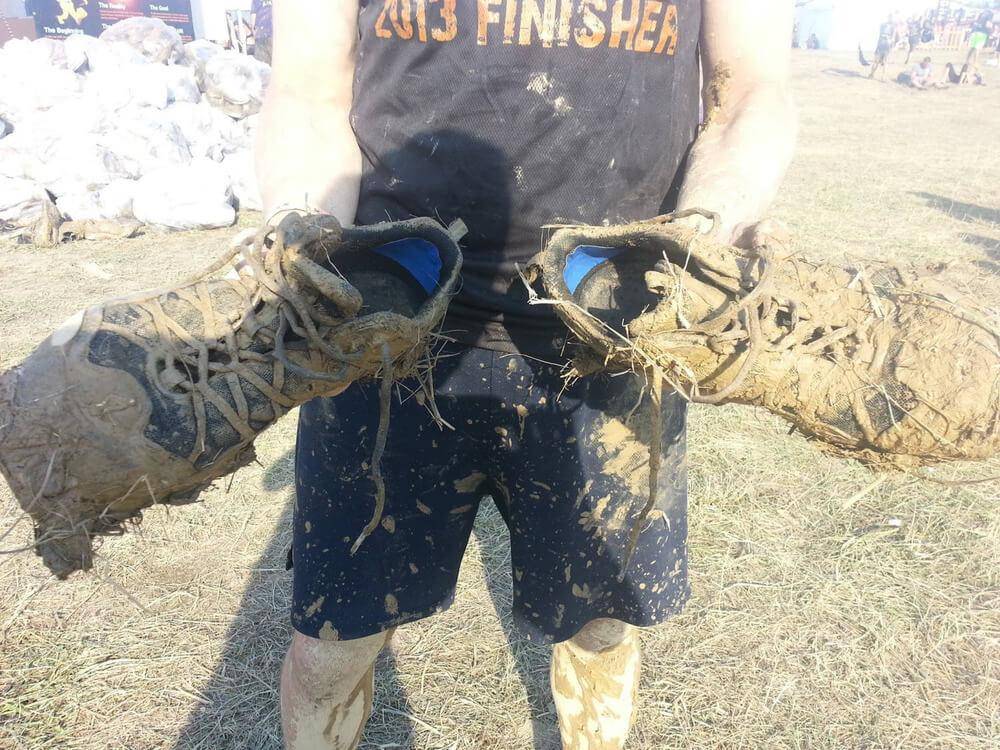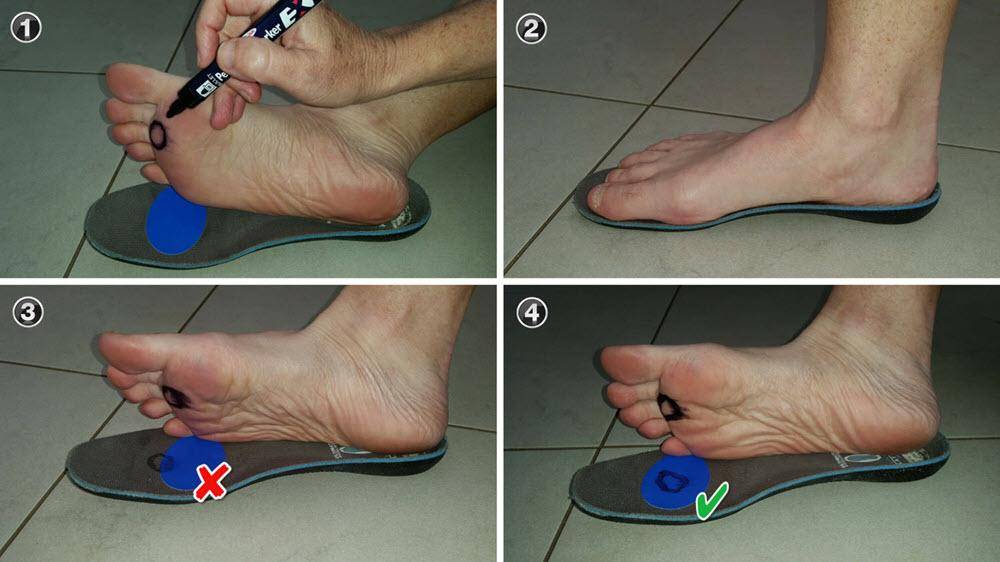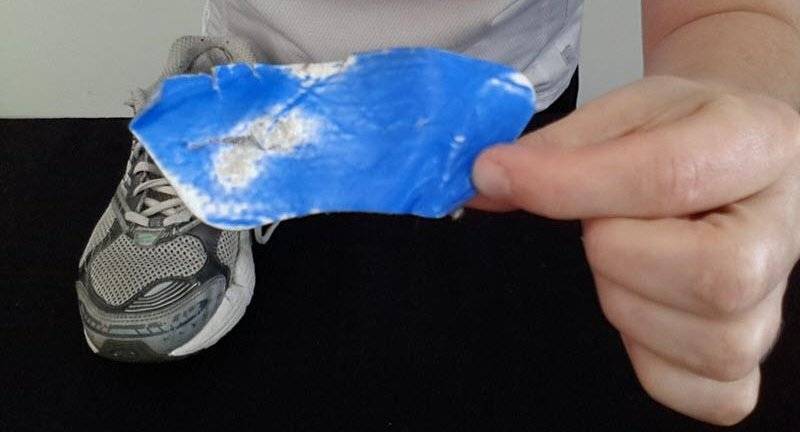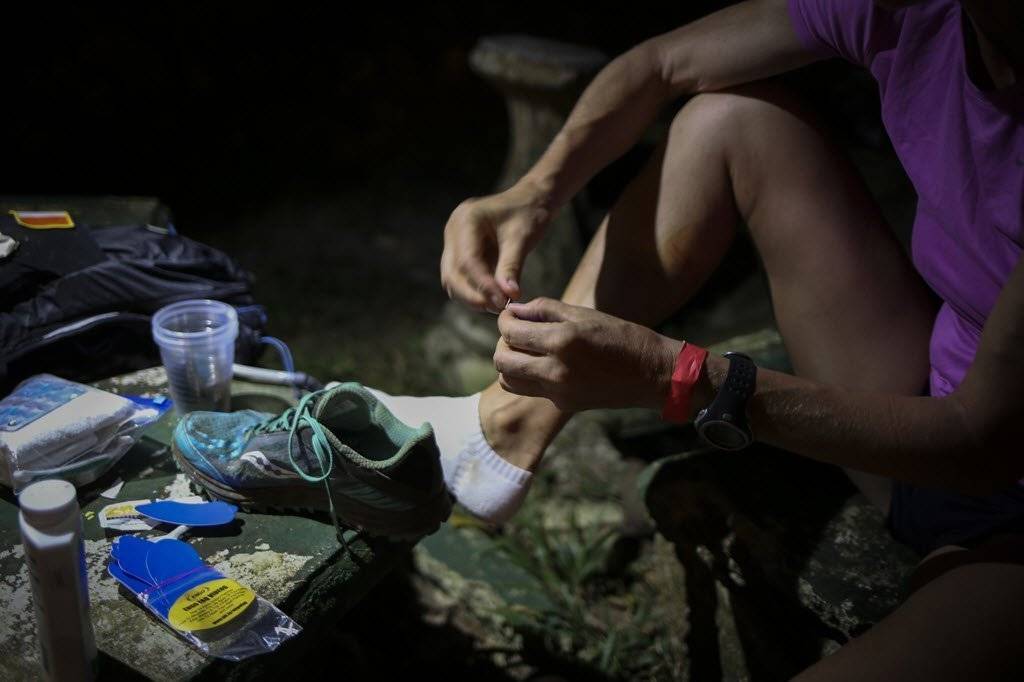ENGO Patches FAQ
Everything You Need Know
Thousands have used my advice to fix their foot blisters and have stayed in their race after I have personally treated their blisters. I’m here to tell you that you don’t need to be a podiatrist to do this.
What do ENGO Patches look like?
Here’s a pair of ENGO Heel Patches in action. ENGO Patches are basically super-low friction stickers that go on your shoes (or insoles/orthotics).

How do I apply my ENGO Patch?
Peel the blue patch away the white backing and press it firmly onto your (clean & dry) footwear.
*It’s extremely important to maintain pressure for 30 seconds to each area of the patch, paying particular attention to the edges.* Without this 30-second continued pressure, maximum adhesion won’t be achieved. As you maintain pressure with your fingers, warmth will be transferred through the patch to the adhesive, making it tackier – a good thing for strong adhesion. Again, this is so important for maximum adhesion to the edges of the entire patch. Then, wear your shoes for the next 30 minutes to warm and press them on even more. Oh, and be careful your sock doesn’t catch the edge of the patch when you put your shoes on – because the adhesion isn’t at it’s strongest yet!
Let me show you how to apply the four different ENGO patches to all areas of your shoe, insole and orthotic.
How do I choose the right ENGO Patch for my blister?
The patch needs to extend 1-2cm further on each side of the blister area to ensure adequate coverage. Take a look at this ENGO sizing chart to make sure you select the right patch.
The large oval patches are the most versatile. If you need to cover a larger area, choose the rectangle patches. If you’d like a smaller patch, simply cut it to size with scissors. And the heel patches are specially designed for blisters at the back of the heel. Take a look at the ENGO Blister Patch Placement Masterclass below:
What do ENGO Patches look like?
The patch needs to extend 1-2cm further on each side of the blister area to ensure adequate coverage. Take a look at this ENGO sizing chart to make sure you select the right patch. The large oval patches are the most versatile. If you need to cover a larger area, choose the rectangle patches. If you’d like a smaller patch, simply cut it to size with scissors. And the heel patches are specially designed for blisters at the back of the heel. Take a look at the ENGO Blister Patch Placement Masterclass below.
Or read this article for more advice on choosing the right patch for your blister.
Are there any other special application techniques?
If you’re dealing with edge blisters, you’ll need to use the 2-Patch Technique.
How can I ensure I get the most out of each ENGO Patch?
How long to ENGO Patches last?
Your patches won’t wear through for at least 300 miles (~500km).
How do they work?
By cutting the friction level between the sock and your shoe. Read more about how ENGO Patches work.
I’ve got a patch in my shoe, but I’m still getting blisters. What’s happening?
The first thing to do is make sure your patch is covering the blitered area. Trace around your blistered area with a texta and stand on your innersole. Make sure there’s 1cm extra patch on all sides – because your foot moves around a bit in your shoe, even under normal circumstances. You can do something similar to check the position of your heel patches. Blisters on the top of your toes will be more tricky. Put a mark on the outside of your shoe where your blister is to help position the patch. If you’re sure your patch is in the right spot, and you’re still getting blisters, get in touch with us!

Is the adhesive really strong enought to last 300 miles?
Yes, the pressure-sensitive adhesive really is that strong. But some care is required on your part with patches applied to the heel. Too often, out of convenience, we forcibly slide our feet into our shoes. This is likely to drag the patch down over time. You also need to ensure maximum adhesion was achieved from the beginning, and you don’t get your shoes waterlogged. This will very likely compromise adhesion.
What if my shoes get wet?
ENGO’s performance is not adversely affected by sweat or low levels of moisture inside your footwear. But if they are waterlogged, the adhesive may be compromised and you may have to replace them.
Are there any limitations?
Yes, and it’s important that you know about these. You can read about ENGO's limitations here.
How do I know when my ENGO Patch is worn out?
When the blue patch turns white.

How do I remove the patch?
Loosen one edge and pull the patch away from the shoe. If you have any difficulty, gently warm it with a hair dryer to loosen the adhesive ever so slightly. If any adhesive remains on your shoe/insole, standard white vinegar can be used to loosen it so it releases from fabric and leather shoe linings. All it takes is a little vinegar soaked on a cloth that’s rubbed onto the adhesive residue. After about two minutes, the adhesive should almost release in one piece. Any residual adhesive can be scraped with a fingernail or dull utensil. Let the surface dry completely, then apply a new patch. There’s no need to clean the shoe lining further, since the vinegar dries quickly and doesn’t leave any oily residue behind.
Can I apply ENGO Patches to my skin?
ENGO was designed for use in footwear, so we guarantee its effectiveness for those applications. ENGO’s adhesive is not medical grade and therefore has not been tested on skin. ENGO is latex-free in the event you make a mistake. Please refer to the Material Safety Data Sheet for more details.
Can I apply ENGO to socks?
Yes. But while ENGO stands up to sweat, it’s probably not going to stand up to the warm, soapy water of your wash cycle when you wash your socks! For the same reason, if you put your shoes through the washing machine, they’ll probably dislodge soon after. There is one technique where ENGO can provide a lot of relief when on the sock.
Does ENGO help if I already have a blister?
Yes it does! Your blister will feel far less painful. And it will help it heal quicker.
What else can ENGO help with?
ENGO will prevent hot-spots and chafing and will aid in the management of calluses and ulcers.
How thick is an ENGO Patch?
ENGO patches are only 0.38mm thick and very flexible! That means shoe-fit is unchanged.
Does ENGO have an expiry date?
As long as you store your patches in the resealable bag provided, ENGO will last several years. When patches are not protected, the adhesive shelf life may be limited to 24 months.
Does ENGO come with any guarantee?
Yes, when you purchase ENGO Patches from Blister Prevention we have a money-back satisfaction guarantee!

Where can I buy ENGO Patches?
From us right here! We ship daily, worldwide, from the USA and Australia.
Stock Up Now!
ENGO Patches offer immediate relief from blister-causing friction. We ship daily, worldwide, from Australia and the USA.